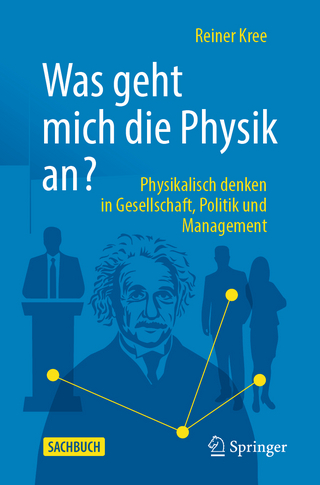
Models of Neural Networks I
Springer Berlin (Verlag)
978-3-642-79816-0 (ISBN)
1. Collective Phenomena in Neural Networks.- 1.1 Introduction and Overview.- 1.2 Prerequisites.- 1.3 The Hopfield Model.- 1.4 Nonlinear Neural Networks.- 1.5 Learning, Unlearning, and Forgetting.- 1.6 Hierarchically Structured Information.- 1.7 Outlook.- References.- 2. Information from Structure: A Sketch of Neuroanatomy.- 2.1 Development of the Brain.- 2.2 Neuroanatomy Related to Information Handling in the Brain.- 2.3 The Idea of Electronic Circuitry.- 2.4 The Projection from the Compound Eye onto the First Ganglion (Lamina) of the Fly.- 2.5 Statistical Wiring.- 2.6 Symmetry of Neural Nets.- 2.7 The Cerebellum.- 2.8 Variations in Size of the Elements.- 2.9 The Cerebral Cortex.- 2.10 Inborn Knowledge.- References.- 3. Storage Capacity and Learning in Ising-Spin Neural Networks.- 3.1 Introduction.- 3.2 Content-addressability: A Dynamics Problem.- 3.3 Learning.- 3.4 Discussion.- References.- 4. Dynamics of Learning.- 4.1 Introduction.- 4.2 Definition of Supervised Learning.- 4.3 Adaline Learning.- 4.4 Perceptron Learning.- 4.5 Binary Synapses.- 4.6 Basins of Attraction.- 4.7 Forgetting.- 4.8 Outlook.- References.- 5. Hierarchical Organization of Memory.- 5.1 Introduction.- 5.2 Models: The Problem.- 5.3 A Toy Problem: Patterns with Low Activity.- 5.4 Models with Hierarchically Structured Information.- 5.5 Extensions.- 5.6 The Enhancement of Storage Capacity: Multineuron Interactions.- 5.7 Conclusion.- References.- 6. Asymmetrically Diluted Neural Networks.- 6.1 Introduction.- 6.2 Solvability and Retrieval Properties.- 6.3 Exact Solution with Dynamic Functionals.- 6.4 Extensions and Related Work.- Appendix A.- Appendix B.- Appendix C.- References.- 7. Temporal Association.- 7.1 Introduction.- 7.2 Fast Synaptic Plasticity.- 7.3 Noise-Driven Sequences of Biased Patterns.- 7.4 Stabilizing Sequences by Delays.- 7.5 Applications: Sequence Recognition, Counting, and the Generation of Complex Sequences.- 7.6 Hebbian Learning with Delays.- 7.7 Epilogue.- References.- 8. Self-organizing Maps and Adaptive Filters.- 8.1 Introduction.- 8.2 Self-organizing Maps and Optimal Representation of Data.- 8.3 Learning Dynamics in the Vicinity of a Stationary State.- 8.4 Relation to Brain Modeling.- 8.5 Formation of a "Somatotopic Map".- 8.6 Adaptive Orientation and Spatial Frequency Filters.- 8.7 Conclusion.- References.- 9. Layered Neural Networks.- 9.1 Introduction.- 9.2 Dynamics of Feed-Forward Networks.- 9.3 Unsupervised Learning in Layered Networks.- 9.4 Supervised Learning in Layered Networks.- 9.5 Summary and Discussion.- References.- Elizabeth Gardner-An Appreciation.
| Erscheint lt. Verlag | 19.1.2012 |
|---|---|
| Reihe/Serie | Physics of Neural Networks |
| Zusatzinfo | XVIII, 355 p. 3 illus. in color. |
| Verlagsort | Berlin |
| Sprache | englisch |
| Maße | 155 x 235 mm |
| Gewicht | 574 g |
| Themenwelt | Mathematik / Informatik ► Informatik ► Theorie / Studium |
| Naturwissenschaften ► Physik / Astronomie ► Theoretische Physik | |
| Naturwissenschaften ► Physik / Astronomie ► Thermodynamik | |
| Schlagworte | algorithms • Artificial Intelligence • brain research • Hirnforschung • Künstliche Intelligenz • Mustererkennung • Nervennetz • neural modeling • neural network • Neuron • Neuron / Nervenzelle • neurons |
| ISBN-10 | 3-642-79816-0 / 3642798160 |
| ISBN-13 | 978-3-642-79816-0 / 9783642798160 |
| Zustand | Neuware |
| Informationen gemäß Produktsicherheitsverordnung (GPSR) | |
| Haben Sie eine Frage zum Produkt? |
aus dem Bereich


